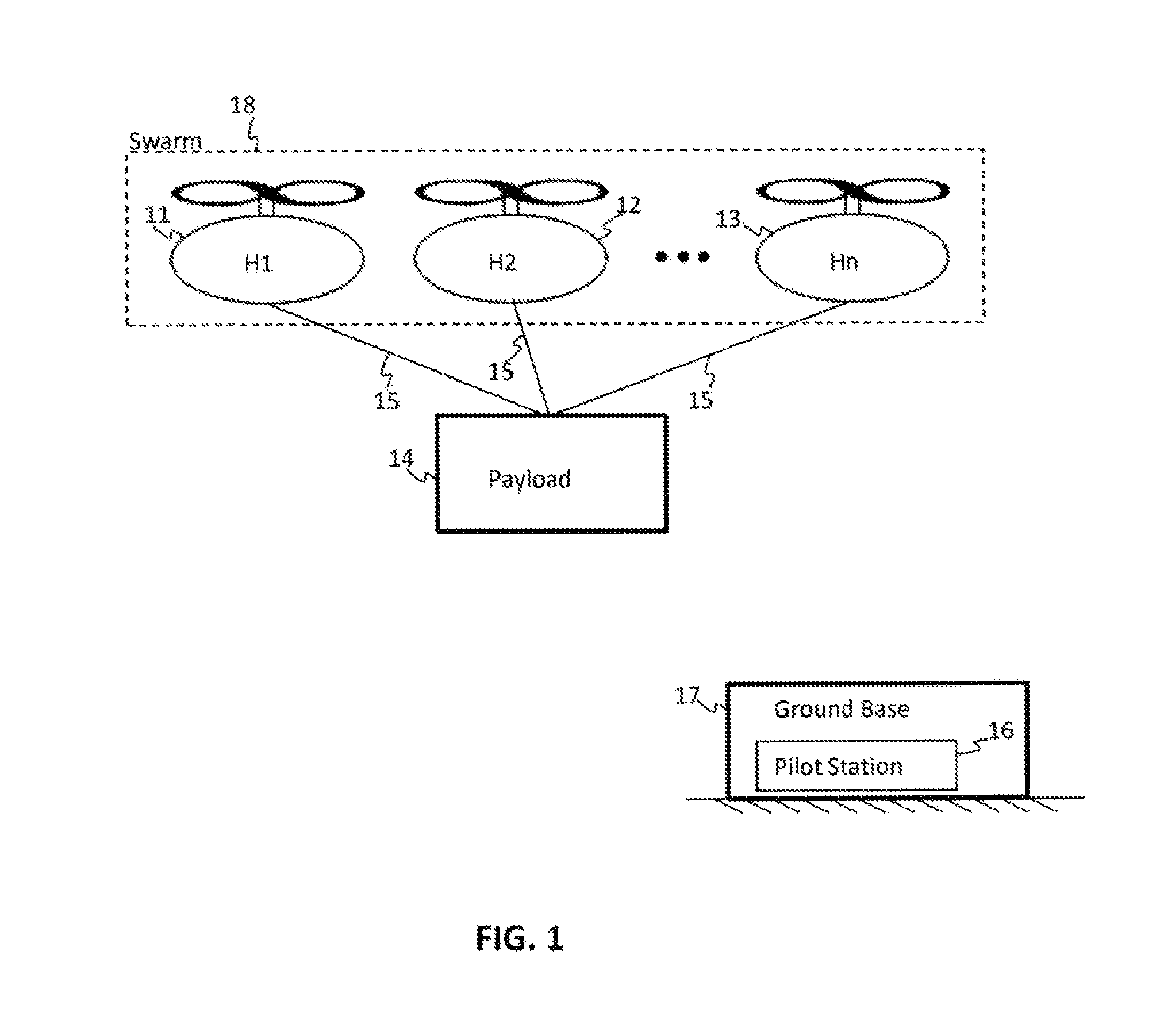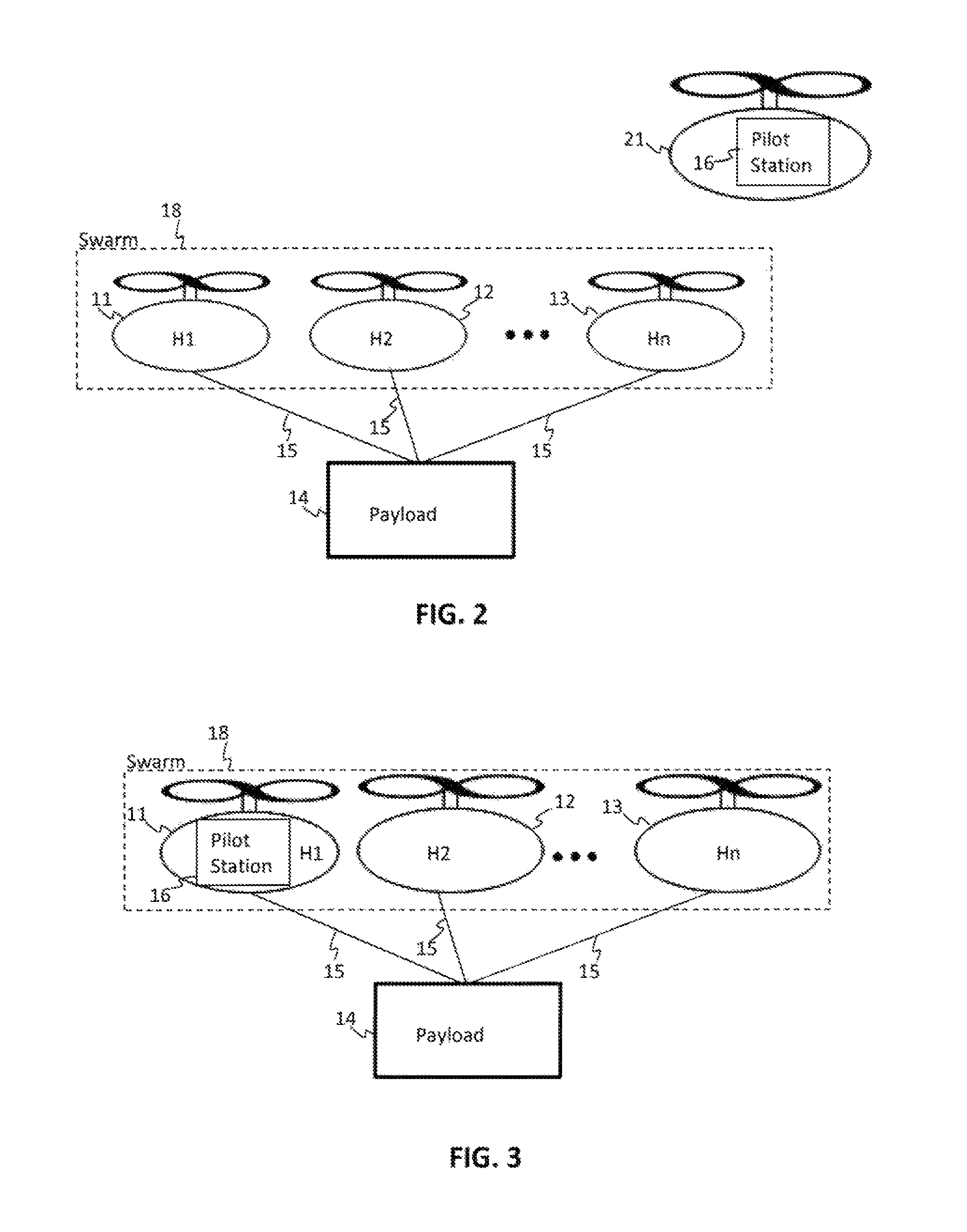System and method for multiple vehicles moving a common payload
a payload and multi-vehicle technology, applied in the direction of process and machine control, instruments, navigation instruments, etc., can solve the problems of increasing cognitive load on the pilot, increasing the difficulty of constructing, maintaining and storing large aircraft, and reducing the lifting capacity of individual aircra
- Summary
- Abstract
- Description
- Claims
- Application Information
AI Technical Summary
Benefits of technology
Problems solved by technology
Method used
Image
Examples
Embodiment Construction
[0033]Many of the below example embodiments are described in relation to air vehicles, also called aircraft. However, it will be appreciated that the principles described herein are also applicable to other types of vehicles, such as watercraft, land vehicles and space vehicles.
[0034]Referring to FIG. 1, a semi-autonomous multi-aircraft lifting system comprises of several aircraft 11,12,13, operating in formation attached to a single payload 14 by means of tethers 15. Aircraft includes, without limitation, those vehicles that can hover such as, by way of example, the UH-1 helicopter, the V22 Osprey, the F-35 Joint Strike Fighter, and a lighter-than-air airship or dirigible. Examples of heavy lifting airships include SkyHook International's JHL-40, CargoLifter's CL160 Super Heavy-Lift Cargo Airship and DARPA's Walrus heavy transport blimp. The number of aircraft in the multi-aircraft system may range from two to n units, and are labeled H1 11, H2 12, and Hn 13. A multi-aircraft lifti...
PUM
 Login to View More
Login to View More Abstract
Description
Claims
Application Information
 Login to View More
Login to View More - R&D
- Intellectual Property
- Life Sciences
- Materials
- Tech Scout
- Unparalleled Data Quality
- Higher Quality Content
- 60% Fewer Hallucinations
Browse by: Latest US Patents, China's latest patents, Technical Efficacy Thesaurus, Application Domain, Technology Topic, Popular Technical Reports.
© 2025 PatSnap. All rights reserved.Legal|Privacy policy|Modern Slavery Act Transparency Statement|Sitemap|About US| Contact US: help@patsnap.com



